How to Install Shutters on Brick
Installing shutters to a brick exterior can be both challenging and rewarding. Brick is one of the most reliable and versatile exterior building materials in existence, with use in the United States dating back to Colonial New England. Homeowners appreciate the durability, energy efficiency, appearance, and minimal effort necessary to maintain their homes in a variety of environments.
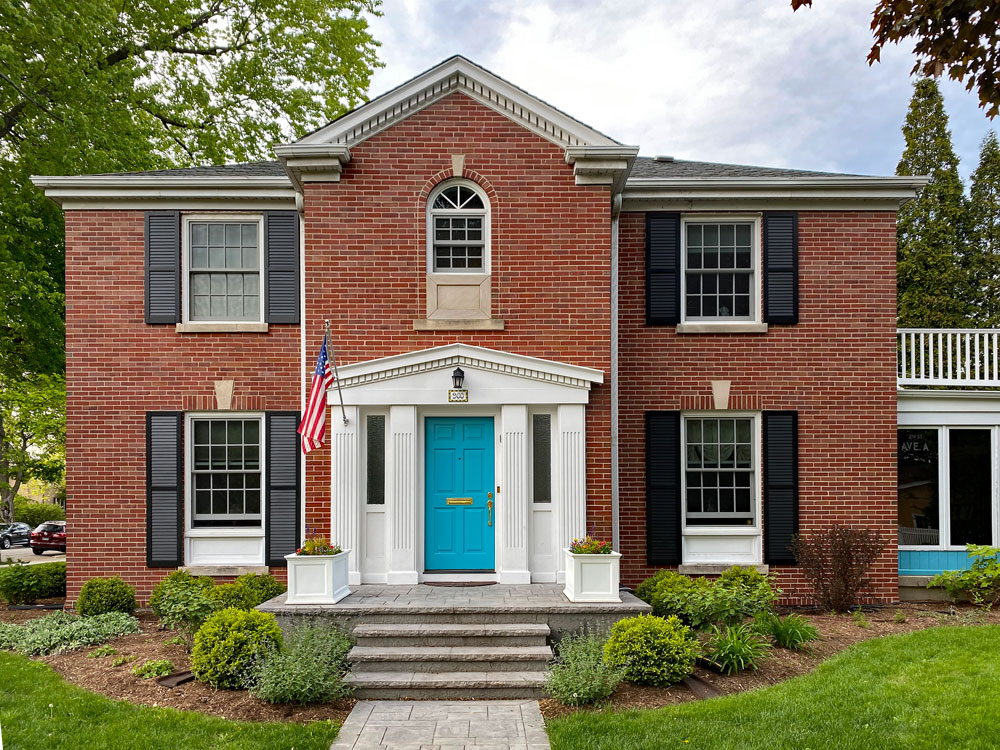
Exterior shutters pair extremely well with a brick façade. They offer contrasting colors and textures to improve the visual allure of a brick or stone building. Outside shutters also possess useful properties that have historically helped regulate light, airflow, and privacy. The planning needed to install exterior shutters to brick is well worth the effort.
Select Shutter Material and Installation Method
Measure the window for shutters using the appropriate guidelines outlined by ShutterLand according to material. Both PVC and wood exterior shutters can be installed to brick with hinges or screwed in a fixed position next to the opening. Measuring windows for functional wood shutters needs to be more precise than for stationary panels. Composite shutters can only be secured to brick with the included polycarbonate installation brackets. The composite measuring instructions outline how to record the necessary dimensions. Decorative vinyl shutters can only be anchored in a static position. Measuring for vinyl shutters is little more flexible because they are sold in fixed interval widths.
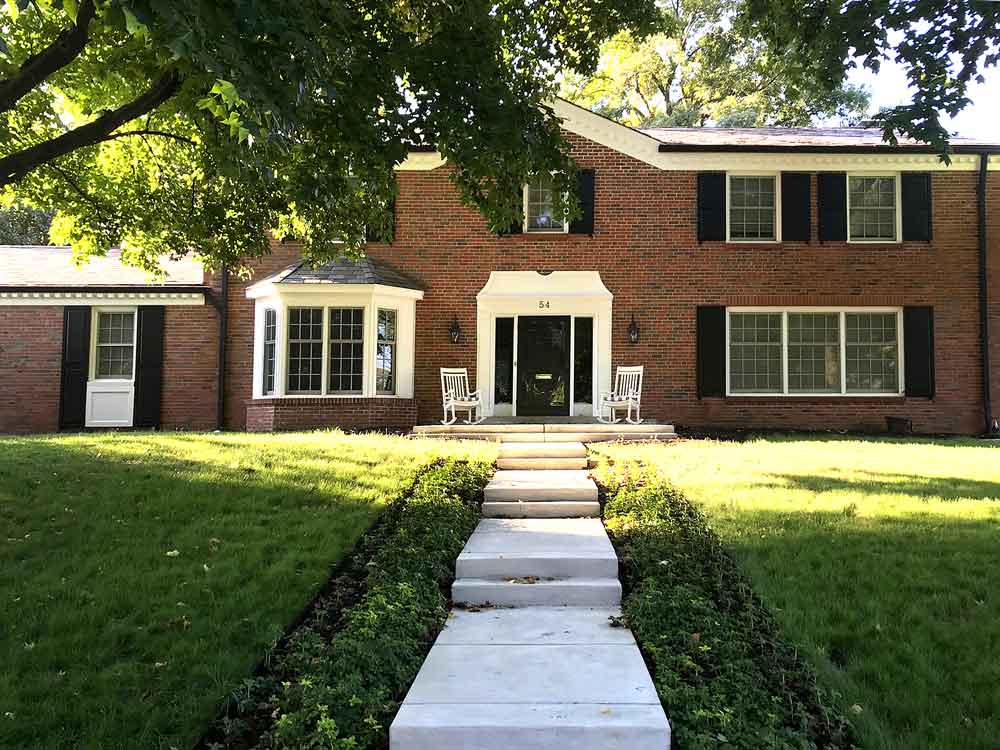
Benefits of Installing Shutters to Brick
There are some favorable qualities of brick that support the installation of custom exterior shutters. Brick is relatively flat, with little change in horizontal depth resulting in the shutter hinges all securing to the same plane. Also, the density of the material will provide a stable foundation for the screw positions. Finally, most brick window openings are square, with adequate depth for exterior shutters to nest inside.
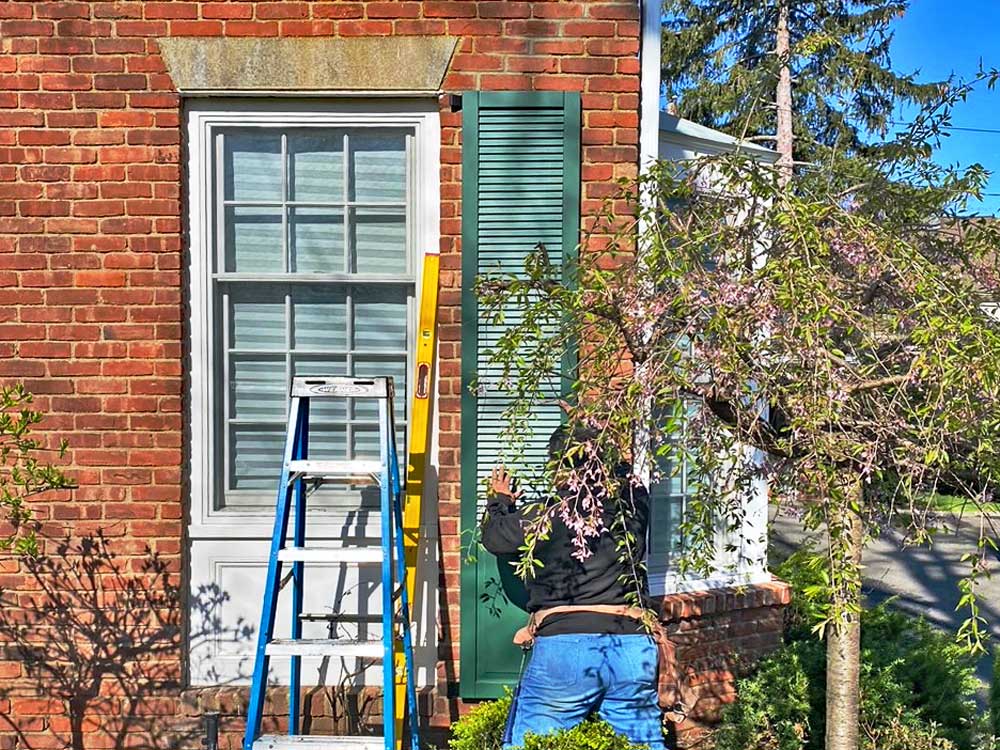
Measure Shutters to Install on Brick
Measuring for outdoor shutters is the most important step in the entire process. Recording and ordering the correct shutter sizes will lead to a successful installation. Shutter material and comprehensive objectives need to be taken into account. Use the instructions provided by ShutterLand to help guide this procedure.
Stationary Shutter Installation to Brick or Stone
All shutters can be installed to brick in a fixed permanent position. Wood shutters attach with screws that enter through the face, pass through the shutter, and hold to the brick or stone. The point of entry on the brickwork first needs to be identified, marked, and drilled. Standard screws will not grip without being paired with a wall anchor. The anchor is hammered into the wall hole first and expands when the screw enters. Alternatively, masonry-specific screws are designed with threads that clutch the walls of the hole without the use of an anchor. Tapcon brand screws have performed well in tested applications.
Composite shutters arrive with clear polycarbonate installation brackets. The brackets eliminate the need to drill through the face of the shutter. Even though screws are also included, it is recommended to substitute masonry-specific screws to adhere to stone, brick or concrete.
Vinyl shutters are sold with a choice of screws or spikes to adhere to the house. Spikes have flaps along the barrel which collapse during entry and expand when pulled to exit. Spikes are recommended for the installation of vinyl shutters to hard surfaces, such as brick, stone, or concrete.
How to Drill into Brick
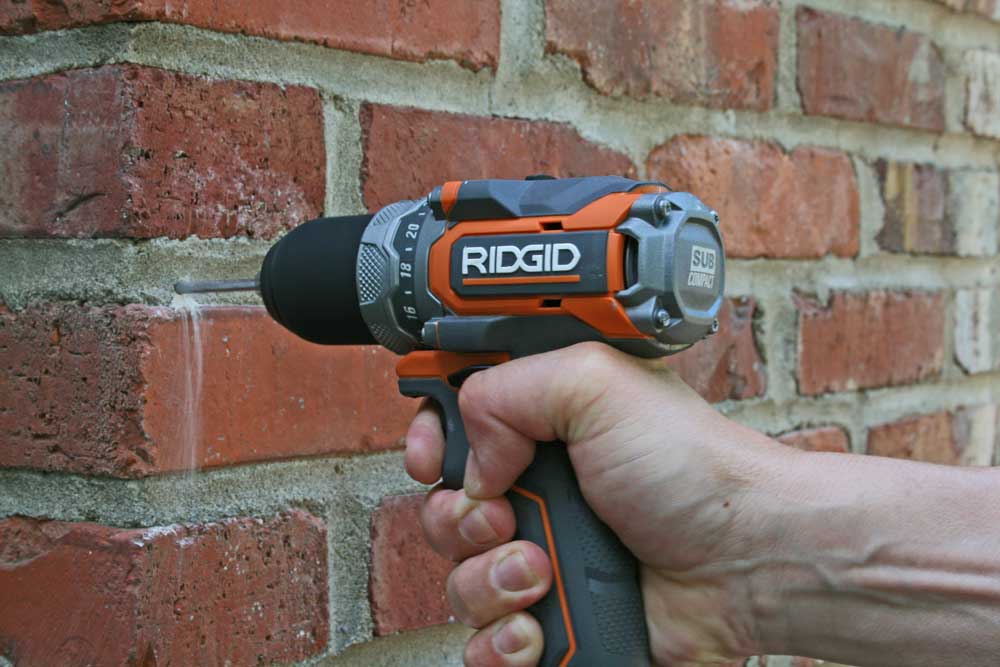
Masonry-specific drill bits are designed to penetrate brick, stone and concrete. The use of a hammer drill is best for drilling into any type of masonry or concrete. A standard drill can be used in most cases, but will likely take longer. If possible, it is best to locate the mounting hole in vertical or horizontal mortar lines rather than into the brick. Some bricks are softer than others and may crumble. If drilling into the brick is unavoidable, try to locate the hole position at least one inch from the brick edge as possible. The hole size will be specified by the anchor or masonry screw purchased. Vinyl shutters arrive with installation instructions that specify the necessary hole size.
How to Hinge Shutters to Brick
Wood exterior shutters are the best choice to install to brick with hinges. Wood is a light, strong, attractive and durable material that has been used for centuries to enhance homes across the United States. Composite shutters are designed to primarily be used in a fixed position but still can be installed with hinges. Composite shutters have only one side with detail and are much heavier than wood, often requiring an additional center hinge. Vinyl shutters can only be installed in a stationary position.
Installation on Brick with Shutter Hinges
Time needed: 1 hour
The most common hardware used to install outside shutters to brick are strap hinges. This type of hinge attaches to the face of the shutter, extending from the near edge across a horizontal rail. Other varieties can adhere to the back of the shutter to be made visible when the shutters are open. A pintle secures to the stone or brick face to support the strap and allow the shutter to swing.
- Installation – Step 1
Hold the shutters in the desired installation location, inside or in front of the window opening. Identify where the pintle will reside on the brick and where the hinge will attach to the shutter. Use painter’s tape to mark the hinge location on the top and bottom rails of the shutter. Louvers will point down and away from the house.
- Installation – Step 2
Lay the shutters on a table or workbench with the hinge side up. Remove the painter’s tape as you position the hinges vertically centered on the top and bottom rails with the raised edge extended off of the side of the shutter. Mark the spot of each screw hole and pre-drill to a depth no greater than the length of the screw. Fasten the hinges in place through all holes.
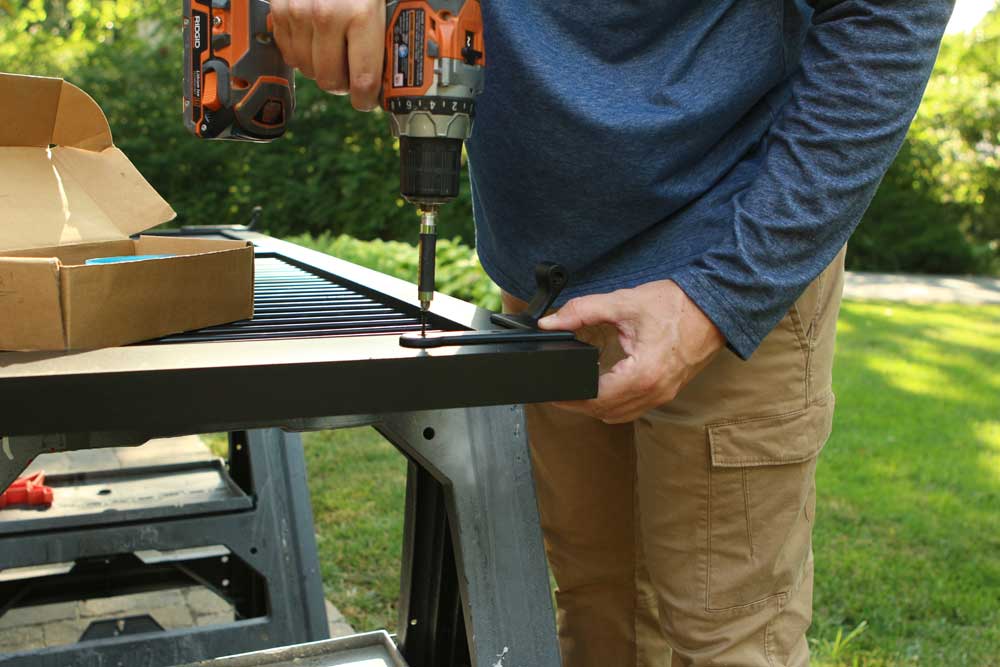
- Installation – Step 3
After all hinges are secure on the shutter, return to the mounting location. Seat a pintle into place through the shutter-side hinge and imprint the hole positions with a marker. Repeat this step for all pintles.
- Installation – Step 4
Drill the brick at each marked location using a masonry bit. The bit size is contingent on screw type and if wall anchors will be utilized. See the above drilling instructions. Screw the pintles into place.
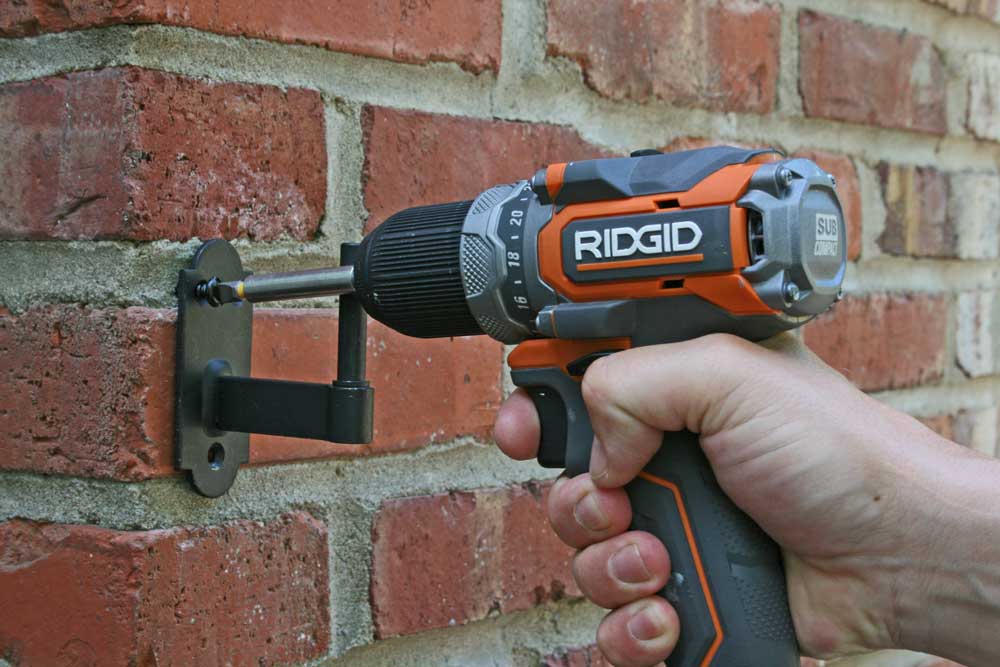
- Installation – Step 5
Return the shutters to the window, slipping the shutter side hinge over the up-pointing pintles.
Install Shutter Dogs to Brick
There are many ways to keep open exterior shutters in place. Shutter dogs are easily the most popular method to accomplish this role. There are three techniques for attaching shutter dogs to brick, stone or any other siding. The first incorporates a long lag bolt that projects through the shutter dog head. This approach only involves one entry point into the brick or mortar joint. A plate mount tieback utilizes three or four smaller screws and is best suited for wood siding. A third option employs a bent arm that extends from the sill where it is attached away from the window to suspend the tieback.
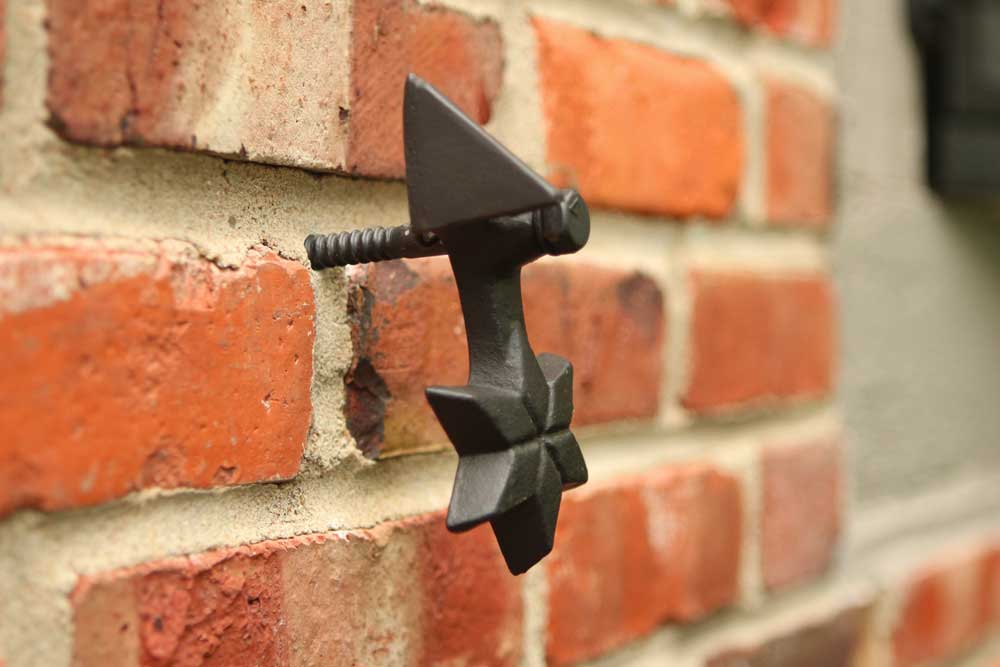
Alternative Installation Methods
Some windows are configured with wood casing surrounded by brick siding. If the window opening is deep enough, the shutters can be secured using butt hinges that attach to the shutter side and to the inside edge of the opening. If the wood trim is wide enough, the strap and pintle can be secured to the face.
Install Bahama Shutters to Brick
There are two primary hinge options that can result in a successful Bahama shutter installation to brick. Both hinges attach to the top of the window opening and suspend the Bahama shutter from above. Similar to a standard strap hinge, to attach a Bahama shutter hinge individual point of entry will need to be identified on the brick or stone. Those points will need to be pre-drilled. Anchors need to be inserted into the holes for standard screws or bolts. Masonry-specific screws can be substituted to avoid drilling larger holes and the use of wall anchors.

